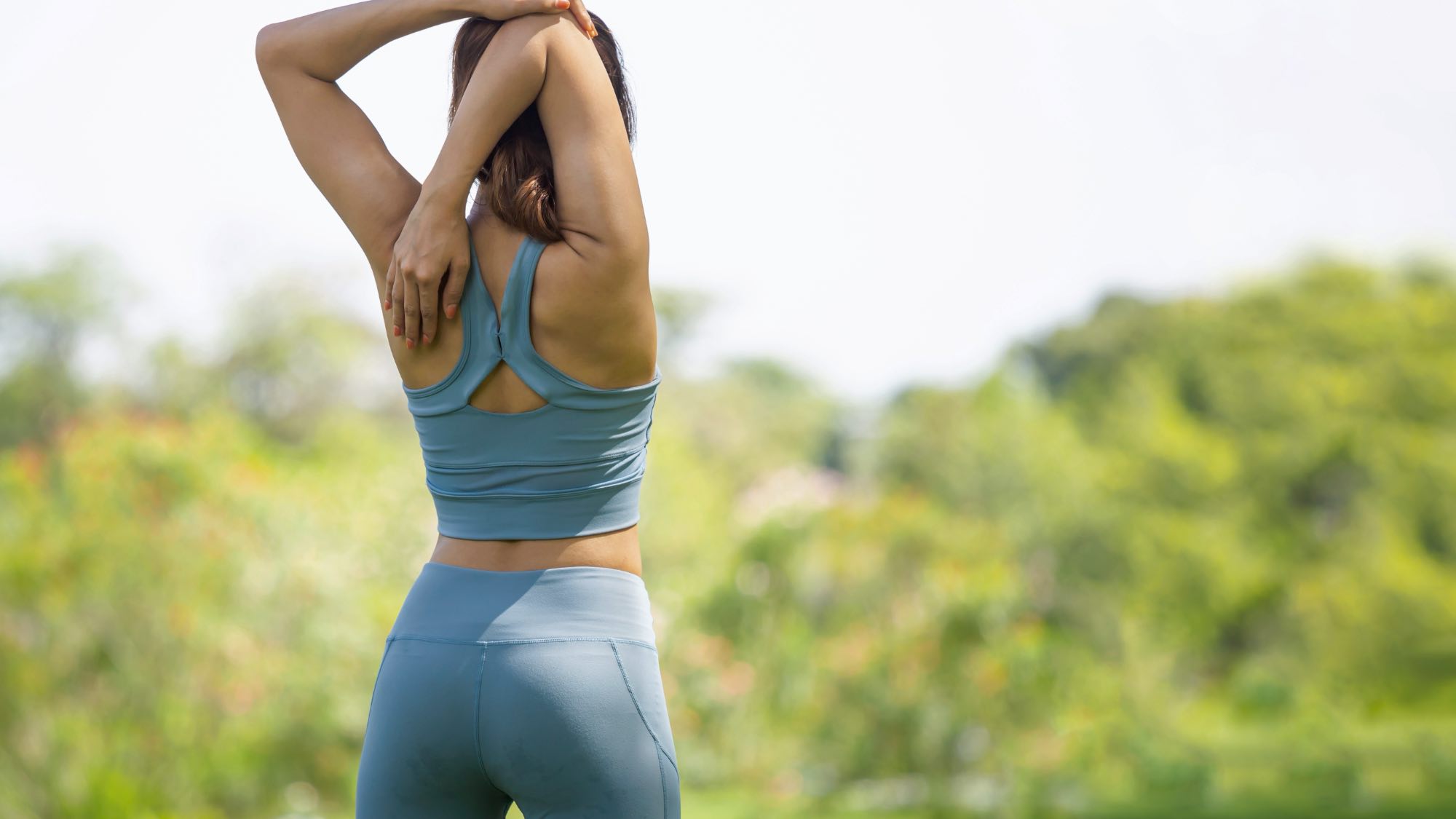
I’m hypermobile, but I have found myself developing ligament and muscle pain and injuries over the years because I didn’t know how to train for hypermobility. For this reason, I consistently seek ways to enhance mobility and protect my body against injury.
“Let’s talk about hypermobility,” says Andy Hsieh, movement specialist and owner of Movement Reborn. “Stop stretching, and see what happens.”
According to Hsieh, you can experience “global hypermobility,” which means that all or most joints are affected, or perhaps just one or two areas that create instability, such as the shoulders or hips. Given that your shoulders are the most mobile joints in the body, they are commonly a problem area.
To keep your body safe and stable, exercises for hypermobility are crucial, and that involves building strength and stability rather than stretching.
Luckily for us, Hsieh is an expert. “The ground is going to be your best friend,” he says. If you're unconnected with the ground, you feel less stable.
What is hypermobility?
According to the Hypermobility Organization, those who are hypermobile will have increased joint flexibility, meaning you might be able to move beyond the normal range. It can also be due to lax ligaments, which can also run in your family.
Hsieh explains that you may experience joints that sit further out of the socket, which causes the tendons and ligaments to pull, tighten, or weaken, and you can often feel pain, instability and tightness despite stretching.
Get instant access to breaking news, the hottest reviews, great deals and helpful tips.
Despite the range of motion you have available around the affected joint, it will still feel unstable. The key is to increase stabilization and encourage the joints to sit in their "proper" position, so that you can feel stable and loose rather than tight and unbalanced.
Hypermobility can lead to injury if unmanaged, and also cause issues with balance and coordination, which could increase the likelihood of falls.
While seeking help from a physical therapist should be the first step, you can see marked improvements by adding low-impact activities like swimming or walking into your routine, which can strengthen your muscles and ligaments without hurting your joints.
Try to avoid too much repetition, and focus on movement that can improve your posture and balance. Here's how.
Watch Andy Hsieh’s hypermobility video:
Hsieh says that there’s something simple we can do during exercises that require our shoulders, and that’s to pull the shoulders back and down to fix them in the correct position before any type of exercise.
This will help you recruit the latissimus dorsi, which are large wing-like muscles that run down the sides of your back and help with shoulder stability, drawing the shoulders down so that you can move more freely.
Lat activation drill
Start on your hands and knees and press your hands into the ground. “The more your hands can engage with the ground, and learn to push into the floor, (you can) rotate so that the entire arm and humerus can connect down into that lat.” Tsieh demonstrates this in the video if you feel unsure what that means.
Ideally, focus on rotating your shoulders back and pulling them down so that you feel the sides of your back become active. Push through your hands, then begin rocking forward and back with your hips while keeping your toes tucked.
If you want to, you can start crawling forward and backward with a long, straight back, rather than hunching. This teaches your shoulders to stay in the correct position while you move.
“The more we can teach the joint to drive away, engage the lat and add torque through that lat to stabilize the entire shoulder capsule, the more stable that joint is going to be.”
Tsieh warns that we rely too heavily on kettlebells and bands to improve shoulder mobility, often holding weights in the air and overhead before we're ready. The body responds better with the ground and bodyweight-only first, with bands and weights as secondary tools.
"Drop the shoulder and anchor into the lat...navigate your bodyweight around it," he says.
It takes time and consistency to undo a lifetime of poor movement patterns, but if you're willing to put the work in, you could see vast improvements in strength and stability. Give this drill a try following the video above, and let us know how you get on.
More from Tom's Guide
Follow Tom's Guide on Google News and add us as a preferred source to get our up-to-date news, analysis, and reviews in your feeds. Make sure to click the Follow button!
- I'm a personal trainer — this one-minute stretch opens your shoulders and builds upper body flexibility
- No, not planks! I'm a PT for seniors, and these are the 4 best exercises you can do for core stability at every age
- This is the minimum amount of cardio you really need each week — and how to achieve it

Sam Hopes is a level 3 qualified trainer, a level 2 Reiki practitioner and fitness editor at Tom's Guide. She is also currently undertaking her Yoga For Athletes training course.
Sam has written for various fitness brands and websites over the years and has experience across brands at Future, such as Live Science, Fit&Well, Coach, and T3.
Having coached at fitness studios like F45 and Virgin Active and personal trained, Sam now primarily teaches outdoor bootcamps, bodyweight, calisthenics and kettlebells.
She also coaches mobility and flexibility classes several times a week and believes that true strength comes from a holistic approach to training your body.
Sam has completed two mixed doubles Hyrox competitions in London and the Netherlands and finished her first doubles attempt in 1:11.
You must confirm your public display name before commenting
Please logout and then login again, you will then be prompted to enter your display name.

